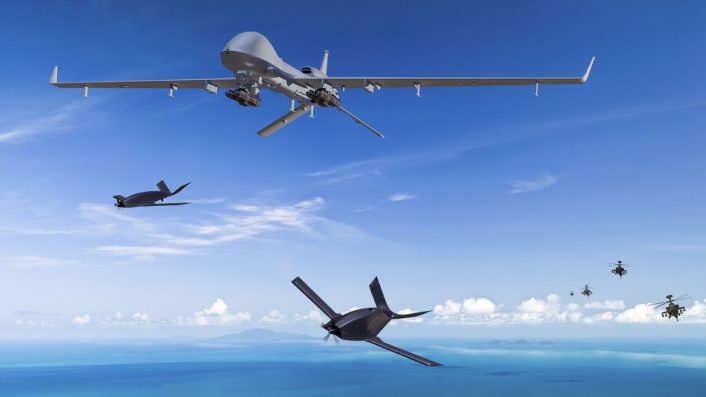The acquisition will allow the National Guard to mirror the Multi-Domain Operations’ capabilities of the active duty component.
General Atomics Aeronautical Systems (GA-ASI) recently announced that the U.S. Army National Guard (ARNG) has ordered 12 Gray Eagle 25M (GE 25M) Unmanned Aircraft Systems (UAS). The new asset will allow the ARNG to mirror the active component in being Multi-Domain Operations (MDO) capable, deployable, and better able to team with newly formed Division Artillery Brigades.
ARNG leaders were granted part of the 2023 congressional funding for the acquisition, after they requested to field the Gray Eagle 25M and mirror active duty capabilities, since ARNG makes up 45% of the U.S. Army’s combat divisions. GA-ASI mentions that the UAS will also allow ARNG Divisions to have Divisional Reconnaissance, Surveillance, and Target Acquisition (RSTA) for the first time.
“The Gray Eagle platform has a proven record of performance with over a million hours of safe operations, including automatic takeoff and landing capability,” said GA-ASI Vice President of DoD Strategic Development Patrick Shortsleeve. “The aircraft excels as an enabler for Fires, Maneuver, Network, and Intelligence operations. It is also an integral part of the Army Aviation team, working closely with manned rotary-wing systems to achieve overmatch against pacing threats.”
The Gray Eagle 25M
The new Gray Eagle 25M takes the Army’s current flagship medium-altitude, long-endurance unmanned aircraft and elevates it to a new degree of power, interoperability, and combat capability. The GE 25M is, in fact, a modernized model of the Gray Eagle specifically designed to meet the U.S. Army’s needs for MDO capability.
The 25M program preserves the core aircraft, with upgrades focused on the internal components, reducing the required time and cost. The upgraded UAS will be controlled from a laptop-based Modular Open Systems Approach (MOSA) ground station, reducing material footprint while dramatically improving transportability, as well as enabling expeditionary operations.
Advanced datalinks, an upgraded propulsion system, and greater onboard electrical power will be part of the 25M package, as well as Artificial Intelligence and Machine Learning capabilities. These capabilities greatly enhance Gray Eagle 25M’s ability to conduct what the Army calls Detection, Identification, Location, and Reporting (DILR), speeding up timelines and opening up more decision space for soldiers and commanders.
A rendering of Gray Eagle 25M employing Air Launched Effects while teamed with AH-64 Apache helicopters. (Image credit: GA-ASI)
Traditionally, a UAS collects intelligence, transmits it to human operators or another central location, and then commanders task the aircraft to respond accordingly; with the 25M upgrade much of that collection, assessment, and action can take place onboard the aircraft in real-time, with what is being called the onboard “edge processing” capability.
Gray Eagle 25M will also carry an advanced new sensor, the Eagle Eye radar. Eagle Eye is a multi-mode radar that can perform moving target indication, detect changes, build strip maps, and yield other precise insights to aircraft operators. Air Launched Effects will be an integral part of Gray Eagle 25M, which will allow the UAS to sense and affect the battlespace, adding the delivery of stand-in effects to the traditional unmanned aircraft roles, long-loitering reconnaissance, surveillance, and target acquisition.
The upgraded power system of GE 25M is a new 200-horsepower heavy fuel engine, dubbed the Heavy Fuel Engine (HFE) 2.0. The engine is also being considered as a replacement for the current 180-horsepower engine used on the Gray Eagle Extended Range.
The HFE 2.0 was completed last month, durability testing which simulated a full 2,500-hour engine life, operating the highest flight loads expected to be encountered by the aircraft in service. The test included conditions simulating 1,250 full power take-offs and climbs to high-cruising altitude, and over 200 hours of cruise in a worst-case generator loading conditions.









